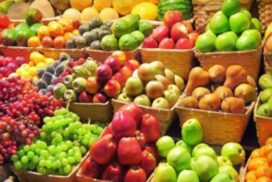Poverty, a scourge that afflicts countless individuals worldwide, is characterized by a severe lack of access to basic necessities, meagre daily wages, excessive spending on consumption (often exceeding seven per cent of income), limited employment opportunities, and soaring food prices that exceed the purchasing capacity of citizens.
While poverty’s grasp extends to various corners of the world, some communities are mired in extreme poverty, primarily due to limited income-generating opportunities, internal armed conflicts, insufficient access to education and job prospects, societal disintegration, and the overreach of local authorities into the livelihoods of citizens.
At the heart of the poverty crisis lies a glaring income inequality gap that separates the impoverished from the more affluent. Some nations allocate significant portions of their budgets to projects that directly benefit the underprivileged, impose higher taxes on the wealthy, and offer financial assistance to the poor, either directly or indirectly. These measures aim to reduce the development gap that exists between these two economic strata.
Presently, an astonishing one billion people worldwide struggle to make ends meet on just one US dollar per day, resulting in food insecurity, inadequate housing, and a lack of adequate clothing, according to the United Nations. Approximately 75 million individuals have plunged into poverty due to the disruptive impact of the COVID-19 pandemic and various internal and external armed conflicts. Recent data from a UNDP survey conducted in July reveal that millions more hover dangerously close to the poverty line, living on less than US$2.15 or US$3.65 per day to meet their basic needs.
Myanmar has persistently pursued poverty reduction initiatives over the years, yielding promising results. Between 2005 and 2017, the percentage of individuals living below the poverty line dropped significantly, from 48.2 per cent to 24.8 per cent, a testament to the government’s commitment to alleviating poverty. However, the outbreak of the COVID-19 pandemic in 2020 and the prevailing circumstances have thwarted these achievements, exacerbating poverty levels. Consequently, the government is focusing on various strategies and emphasizing the growth of the agriculture and livestock sectors to bolster the state’s economy and bridge the development gap between the impoverished and the affluent.
To alleviate poverty, governments and international organizations must work collectively to reduce income inequality and create opportunities for marginalized communities. Only through these combined efforts can we hope to narrow the development gap and bring lasting relief to those struggling to escape the clutches of poverty.
Addressing poverty by closing the development gap
- November 03, 2023
- 426














